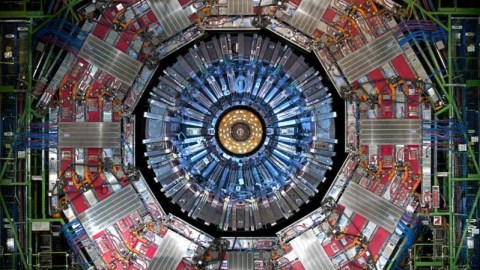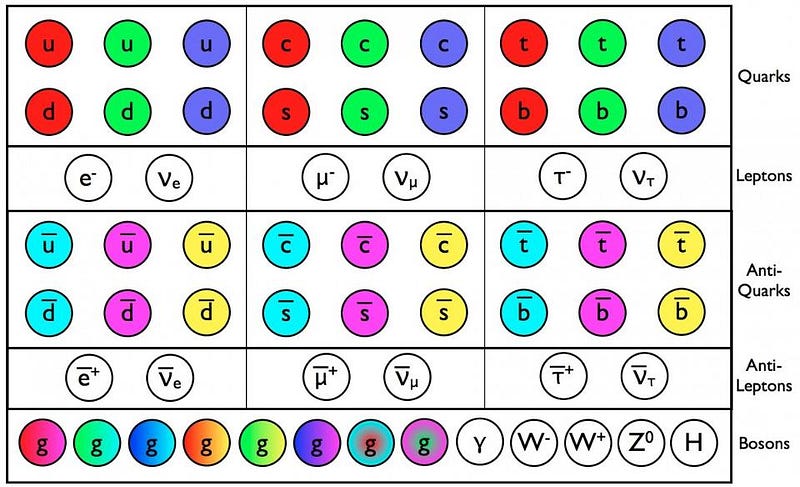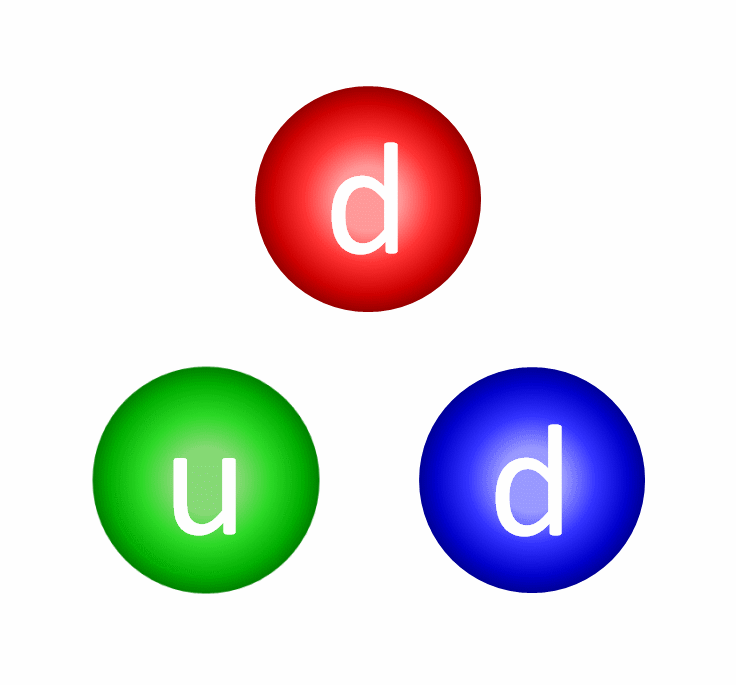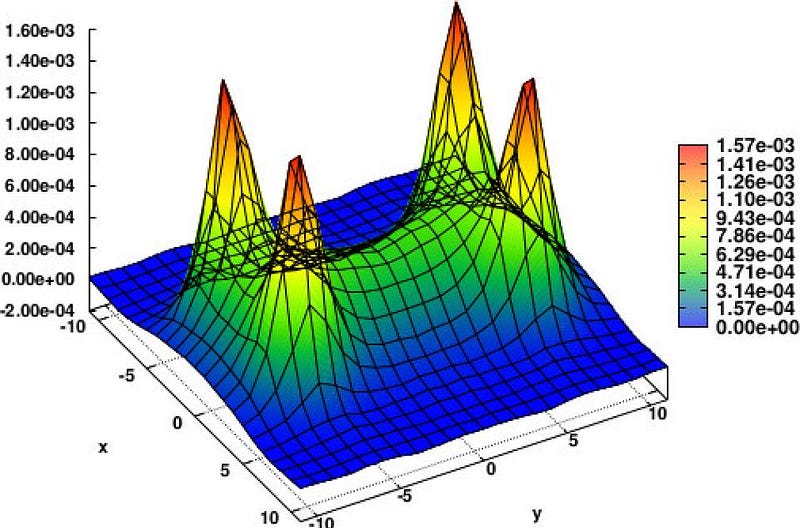Nuclear physics might hold the key to cracking open the Standard Model

If the LHC can’t produce new fundamental particles, the collisions coming from it still a chance to teach us something incredible.
“It was quite the most incredible event that has ever happened to me in my life. It was almost as incredible as if you fired a 15-inch shell at a piece of tissue paper and it came back and hit you.” –Ernest Rutherford
If you want to discover new secrets and mysteries about the fundamental Universe, you collide particles at higher and higher energies to crack open what lies inside. At least, that’s been the most successful method so far! But there’s another approach: to look at how these fundamental particles bind together in interesting, unusual, and even unstable ways. By carefully examining their interactions, it’s possible to identify holes in our present understanding that may elude us if all we do is look for new particles at the high-energy frontier. With the failure of the LHC to turn up any new particles other than the Higgs, this approach might be exactly what physics needs.

It’s been over a hundred years since Rutherford’s discovery of the atomic nucleus, an ingenious experiment where he bombarded some gold foil that had been hammered incredibly thin — so it was only a few atoms in thickness — with subatomic particles. What he found was that while most of those particles passed right through the foil, similar to what you might expect, a few bounced off at odd angles, including many that were returned opposite to their original direction.
This is because atoms are made up of nuclei at their centers. If Rutherford had been able to bombard these nuclei with even higher energy particles, however, he wouldn’t have just smashed them apart into individual protons and neutrons. Going even deeper than that, protons and neutrons themselves are made of even smaller particles: quarks and gluons. As far as we can tell, quarks and gluons are truly fundamental, and have their own, interesting, and unique properties.

For one, unlike all the other known particles of the Standard Model of elementary particles, quarks and gluons are the only ones known that have a color charge, which works very differently from the other “charges” you’re used to.
- A gravitational “charge” (known as mass) comes in only one (positive) type, and is always attractive. If you have a mass, there’s no “anti-mass” counterpart to make the charge go to zero.
- An electric charge can be positive or negative, where one of each can cancel the net charge out, making a composite set of particles (like an atom) electrically neutral, even though it’s made of charged constituents.
- But a color charge can come in three separate varieties — red, green or blue — along with “anti-varieties” for each color — anti-red (cyan), anti-green (magenta), or anti-blue (yellow) — and the right combination can always be “color-neutral,” or white.

But here’s the kicker: so long as you make a combination that’s color-neutral, it ought to be able to stably exist — at least, temporarily — in this Universe. You can make something color neutral either with a combination of a color charge and its anti-color charge (like a quark-antiquark pair), or a combination of three colors (or three anti-colors), like a proton, which is made up of three quarks. We call this color-neutral combination “white,” and so long as something’s white, it can exist if the other conditions are right in nature. In all cases, these quarks (or antiquarks) change their individual colors over time by the emission and absorption of (colored) gluons, but the total combination always remains color-neutral.

For the quark-antiquark combinations, those are known as mesons. If you have only two quarks available (such as up and down), you have limited combinations of the particles you can make, depending on how other quantum properties (such as spin) are available for configuration. If you have more quarks (strange, strange and charm, etc.), you can make more combinations. What you wind up with is an entire spectrum of possible particles, with everything predicted so far — within the reach of experiment — having been successfully confirmed.

For the three quark (or three antiquark) combinations, you can create baryons (or anti-baryons). Again, as you go to higher and higher energies, and incorporate not only up and down quarks, but also strange, charm, and bottom (and so on) quarks into the mix, you wind up predicting an entire spectrum of baryons. And as with the mesons, the better our experimental detectors (and collider energies) have gotten, the more of these particles we’ve discovered. But as you may have already figured out, quark-antiquark pairs and combinations of three quarks (or antiquarks) aren’t the only stable possibilities out there.
For example, here are some colorless objects of interest:
- You could have two quarks and two antiquarks: a tetraquark state.
- You could have four quarks and an antiquark: a pentaquark state.
- You could have six quarks (or six antiquarks) all bound in a single object: a dibaryon state.
- Or you could even have a quasi-stable configuration make exclusively of gluons, all adding up to a colorless combination: a glueball.

For a long time, these objects were theoretical only. And yet, the theory of the strong interactions — Quantum Chromodynamics (QCD) — demands that they must exist. If they don’t then QCD is wrong! Pentaquarks were first claimed discovered back in the mid-2000s, a discovery which turned out to be spurious. But over the past few years, the first tetraquarks were discovered, and just in 2015, the first verified pentaquark state was announced.

Why is this important? First off, we’re verifying a previously untested assumption of one of the most important fundamental, underlying theories we have about the Universe. We’re testing this theory in a wholly new way, uncovering the existence of particles that we weren’t sure would actually turn out to be there.
But second off, there’s almost definitely an entire spectrum of these new sets of particles in existence: tetraquarks, pentaquarks, and possibly more! When there’s one allowed combination, there are likely many. And with more ingredients in every combination (four for tetraquarks, five for pentaquarks, etc.) than mesons or baryons, there ought to be many more of these bound states than there are of all the previously known states put together.

Interestingly, this could also lead to a renewed interest in the search for glueballs, which would be the first ever direct evidence of a bound state of gluons in nature! If the exotic QCD predictions of tetraquarks and pentaquarks are borne out in our Universe, it stands to reason that glueballs should be there as well. Perhaps the existence of these composite particles will be verified at the LHC as well, with incredible implications for how our Universe works either way.

The amazing thing about pentaquarks and all sorts of exotic states of matter isn’t that they exist, but that they enable us to push the limits of physics even farther, and to probe the boundaries of our most sacred theoretical predictions. The most exciting utterance we can make in physics is, “that’s funny,” as Rutherford must’ve thought to himself more than a century ago. Every time we push the frontiers like this, we create a new opportunity for ourselves to find out whether nature’s in line with our expectations, or whether there really is something funny there.
Ethan Siegel is the author of Beyond the Galaxy and Treknology. You can pre-order his third book, currently in development: the Encyclopaedia Cosmologica.





